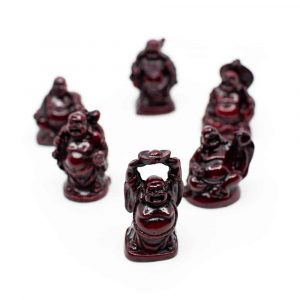
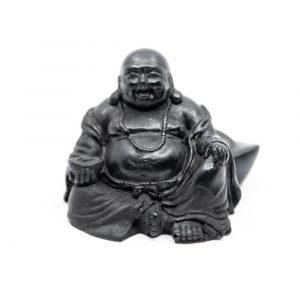
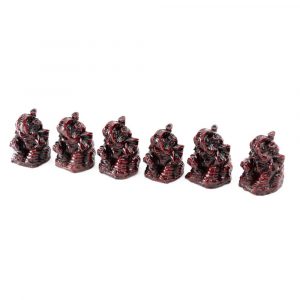
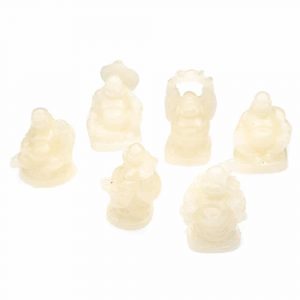
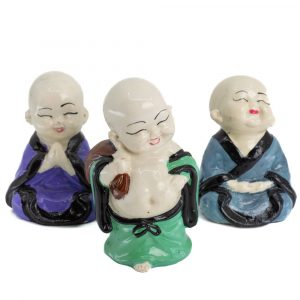
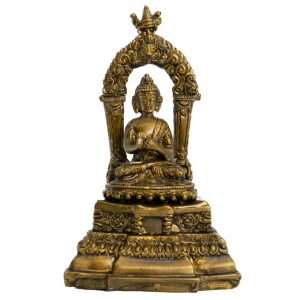
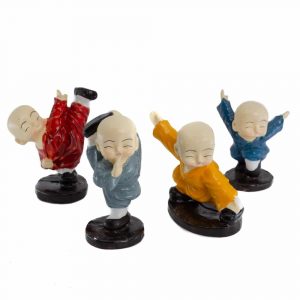
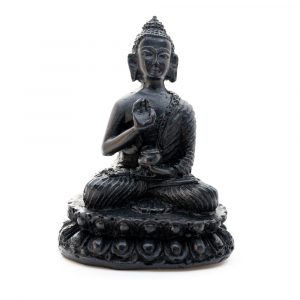
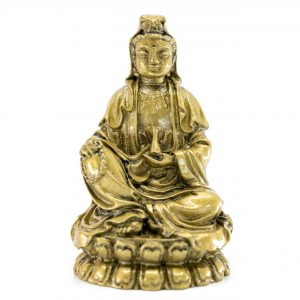
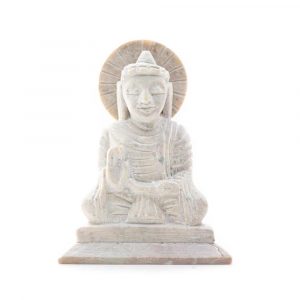
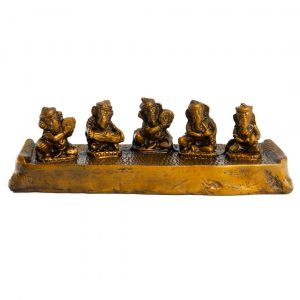
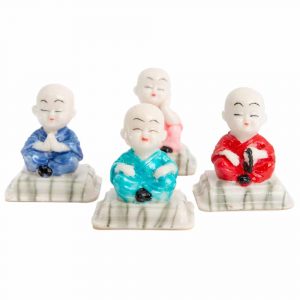
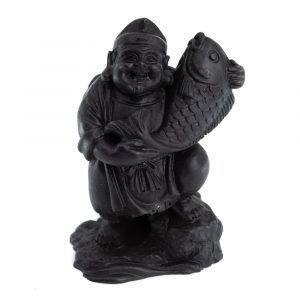
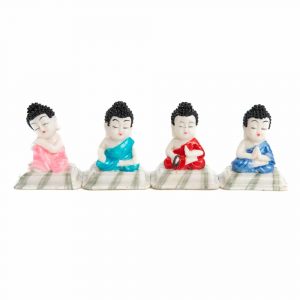
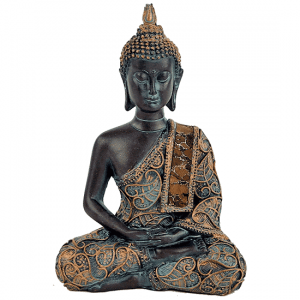
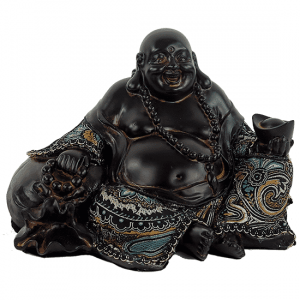
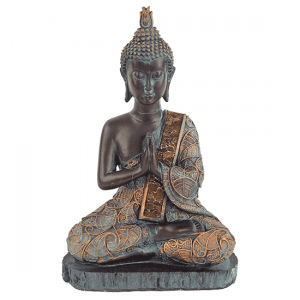
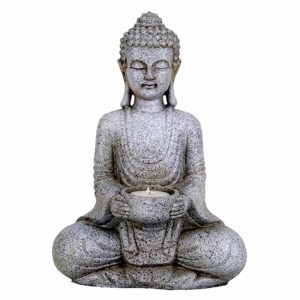
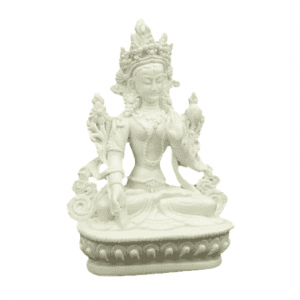
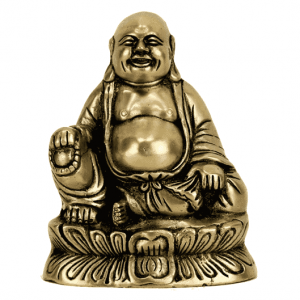
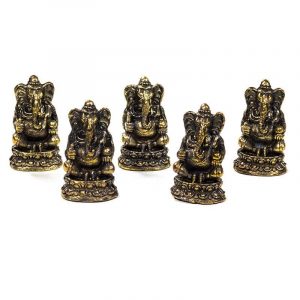
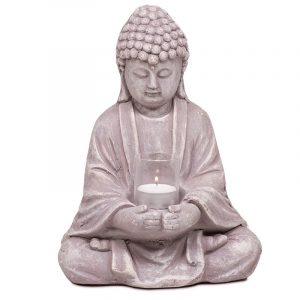
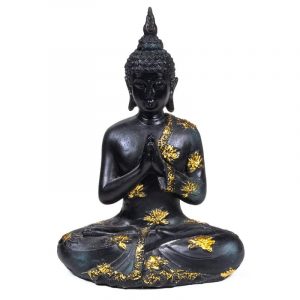
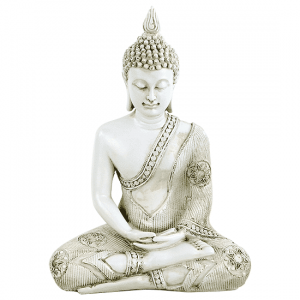
A Buddha image is a representation of an awakened soul. According to Buddhist teaching, Buddhas are people who have found enlightenment. Throughout history there have been several holy figures, all with their own characteristics and wisdom. Do you also want to give a Buddha statue as a gift or buy a Buddha that suits you? Then read on!
The word “Buddha” comes from Pali, an ancient language in which the earliest Buddhist scriptures were written. Herein it means “the enlightened one” or “awakened one.” This name was given to the first person who according to the books attained holy nirvana, Prince Siddharta Gautama. His life story is therefore the basis of Buddhist teachings. According to the stories, the development Siddhartha went through in his thinking led him not only to heavenly enlightenment, but also to the formulation of a new philosophy of life. Therefore, in his awakened state, Siddhartha went through life as Gautama Buddha, the first described Buddha and founder of Buddhism.
From Standing Buddha statues to resting Buddha figurines, they symbolize Buddhist teachings. Thus, what all types of Buddhas have in common is that they make reference to important Buddhist concepts such as compassion, detachment, and rebirth. For Buddhists, these are also eternal truths that you can always fall back on. That is why you can also buy Buddha statues for peace or wisdom. This figurine can also have a soothing appearance to people who aren’t even familiar with the Buddhist teachings. It is therefore not surprising that many people become calm from a Buddha image!
Buddhist history records several enlightened people after the first Gautama Buddha. Thus new Buddhas appeared all the time, each with their own qualities and contribution to philosophy. Sometimes a new movement even emerged within Buddhism based on their teachings. That is why believers throughout Asia venerate different types of Buddha images. You can see from the symbolism of the figures which Buddha it is. Often the posture, hand gestures or clothing say a lot about a Buddha. Below you can read more about the best-known versions.
Most seated Buddha images have closed eyes, meditating with legs and hands folded in lotus position. There is therefore a simple explanation for the Seated Buddha. This pose refers to the meditating Buddha at the moment of enlightenment. According to Buddhist tradition, Gautama Buddha attained his enlightenment sitting under a bodhi tree. He spent forty-nine days there in silence, without eating or drinking. This then led to his awakening. Meditation has subsequently become very important in Buddhism. Buddha’s way of sitting is also called the lotus position and thus refers to one of the best-known metaphors in philosophy. The Lotus flower is a symbol of spiritual growth and enlightenment. This also explains why Buddha in images often sits on a lotus leaf!
How to Recognize Buddha’s Hand Positions
Buddha often makes recognizable hand gestures called mudras. For Buddhists, these gestures express a spiritual meaning. Mudras are also, according to many people, a way to influence energy. They are even seen as yoga for your hands! To give the statue extra meaning, you will find the most common hand positions of Buddha below:
A well-known hand gesture is the Bhumisparsha. The name means “touch of the earth” and indicates that Gautama invokes the ground as a witness of his enlightenment. The right hand is on Buddha’s knee with the fingers pointing to the ground and the left hand on his lap with palm to the sky. The Varada position is similar. He has a right palm that points downwards. Buddha’s fingers here represent five perfections or compassion.
Then there is the Abhaya mudra, where Buddha raises his right hand and thus expresses fearlessness. The Karana is also meant to be powerful. With forefinger and little finger up, according to the stories, Buddha wards off negative energy. Also common is the Vitarka, where Buddha’s thumb and index finger touch, while the right hand is held up. These circles represent flowing energy.
Also popular is the Dhyana mudra, where the right hand lies on the left with the thumbs together. This popular meditation pose symbolizes wisdom. The Dharmachakra mudra forms an imaginary circle between both hands. Two fingers of each hand touch each other and sometimes those of the other as well. This symbolizes Buddhist teaching, also called dharma.
In Buddhist symbolism, a Buddha usually stands for good luck. Not only for yourself, but also for your loved ones. That is why you see many people giving a Buddha as a present. Not only do you wish the recipient good luck, it also strengthens your friendship. You can also give yourself a Buddha. With the right intention, this is not a problem at all. If you simply enjoy the beauty and positivity of the Buddha statue, you know your heart is in the right place!
As you know by now, you can choose beautiful Buddha images by their hand positions, because you immediately know what your statue stands for. But the origin of a Buddha also plays a role. For example, there are:
Thai Buddha Statues are beautifully detailed and made of different materials. They often have a golden head and colorful clothes inlaid with precious stones.
Chinese Buddha Statues are recognizable by dark lacquered wood. This dark red or black Buddha is also called the Buddha of Happiness. He is actually a monk with holy status called the Budai. You have probably seen this Lucky Buddha, Laughing Buddha, Happy Buddha or Fat Belly Buddha! If not, read more about the Buddha Meaning here.
The Japanese Buddha can be recognized by the closed eyes, long earlobes and sitting meditation posture on a lotus leaf. The hands of the Japanese Buddha often rest in his lap in the so-called dhyana mudra. The abhaya mudra is also a common hand gesture with this figure.
Figurines from India are often made of wood or brass and have a simple design. So if you like a specific look, you can also buy Thai, Chinese or Indian Buddha statues to complete your quest!
The Resting Buddha, also known as the Sleeping Buddha, is originally from India and rests its head on the right knee while the left leg is horizontal below it. The hands of the Resting Buddha are overlapped under the head. The Buddha rests and thinks about life with closed eyes.
The Meditating Buddha sits in the so-called lotus position, which stands for rest and meditation. The hands of the Buddha often assume the Bhumisparsha pose, or the hands are placed on top of each other in a cup shape with the palms up. Characteristic of the Meditating Buddha is that he often wears a robe. This is characteristic of Buddha statues throughout Asia.
The Standing Buddha is often depicted slender with a cloak that represents protection and security! He holds the hands of the Standing Buddha at chest height with both palms together with the fingers pointing upwards. This pose is also known as the Namaskara Mudra. This gesture is often said to be ‘namaste’, which means ‘I greet you’.
If you want to buy a Buddha, shop online at Spiru and find Buddha images for indoor and outdoor use in the garden. In our webshop you will only find Buddha statues for indoor use. If you don’t want to break the bank, a sharply priced statue doesn´t have to look like a cheap Buddha statue! Our modestly priced Buddhas are made of the popular polyresin or polystone, which gives the Buddha statues a gray appearance that resembles natural stone. However, it is not recommended to put these saints in the garden as they are more delicate than a natural stone. Choose a place in the house where your Buddha image comes into its own instead. This can be on an altar, for example, but also in a natural niche or a meditation room. In short, for every place where its calm appearance comes in handy, you will find an affordable Buddha statue in our large Buddha shop.
Spiru has a large collection of beautiful Buddha statues for sale. In the Buddha webshop you will find meditation masters from different traditions. For example, you can buy a Chinese Mini Buddha, Happy Buddha, or Shaolin Monk statue. Thai Buddha Statues are available too, just like the Japanese Buddha, Medicine Buddha, Tara Buddha, Meditating Buddha, and the Standing Buddha. And don’t forget the Resting Buddha from India! Of course there is a wide choice of different sizes, materials, and price ranges. For example, there are figures of 20 cm, 25 cm, 27 cm, 30 cm or 60 cm in height. Also think of a Buddha head or price-friendly replicas. Meditation Inspiration starts at Spiru!
© 2024 Spiru